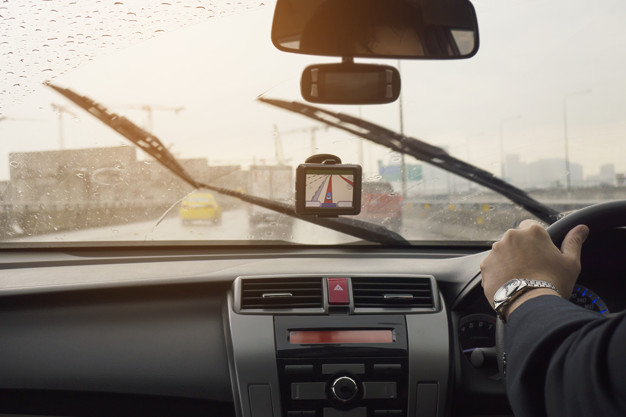Driving in rain, whether a sprinkle or a heavy downpour, can be one of the most troublesome driving circumstances a driver experiences. Rainy conditions are directly associated with higher mishap rates. No matter what part of the country you live in, it is practically sure that you will be needed to drive your vehicle in the downpour eventually. Knowing how wet streets and reduced visibility affect the way your vehicle handles will help you drive safely in rainy conditions.
1.Double Check Your Car’s Equipment.
Make sure that your car’s equipment is in working order before encountering rainy weather. Check your headlights, tail lights, and windshield wipers to ensure that they will work efficiently when they are required. Also, check the tread of your vehicle’s tires. Balding tires can severely reduce traction on wet roadways.
2.Slow Down
Slow Down Not only should you adhere to the posted speed limit when driving in wet weather conditions, but you should also drive considerably slower than you normally would. Wet streets are risky. Your vehicle’s response time is much slower when it is raining. Reduced speed is imperative in rainy weather.
3.Turn On Your Headlights
Turn On Your Headlights Most states require drivers to turn on their vehicles’ lights while driving in rain. Even if it is only misting, turning on your vehicle’s headlights will increase both your own permeability and other drivers’ capacity to see your vehicle out and about.
4.Use Your Windshield Wipers
Use Your Windshield Wipers While this may seem like common sense, some people forget to turn on their windshield wipers in light rain. Most cars’ windshield wiper speed is adjustable to clear moisture from the glass in a light mist or a heavy downpour. There are also several
products available that can be sprayed or wiped onto the glass and claim to defer the collection of rainwater.
5.Clean of windshield
Clean the inside and outside of your windshield consistently. You need your windows as spotless as conceivable when those unexpected downpours emerge.
6.Keep up a safe distance
Keep up a safe distance between you and the car ahead. You should expand the distance between yourself and other cars on the road when the rain begins to fall. Slamming on the brakes in rainy weather can cause you to lose control of your vehicle, prompting a higher potential for wrecks.
7.Time to wait
Know your limits and abilities. If you are experiencing difficulty seeing the street ahead, and different vehicles, the time has come to pull over and wait for the storm to dissipate. Pull as far off the road as possible, turn on your danger lights and get ready to wait it out.
9.Watch Out For Standing Water
Driving through standing water can cause hydroplaning to occur. Which is the point at which you lose footing and slip over the outside of the street. To abstain from hydroplaning, drive around places where water has been collected by changing lanes or securely controlling around such regions.
10.Emergency Kit in your car
Make sure you have a fully-stocked emergency kit in your car. The emergency kit should include road flares or cones, an extra charger for your phone, and a basic first aid kit.
Staying safe while driving in the rain is simple if you make a conscious effort to employ these safety precautions. Remember that diminishing your speed and turning on your lights are two of the least complex and best methods of decreasing the odds of a mishap brought about by wet climate.
Resources:
driving-tests.org
nubrakes.com
In Motion Automotiveour business is to keep neighbors and communities’ cars at DALLAS, one of our services is an oil change for all cars and all models
our services are Speedy service with a smile and competitive pricing is the start, but our goal is to get you on the road, safe and assured for reliability.

